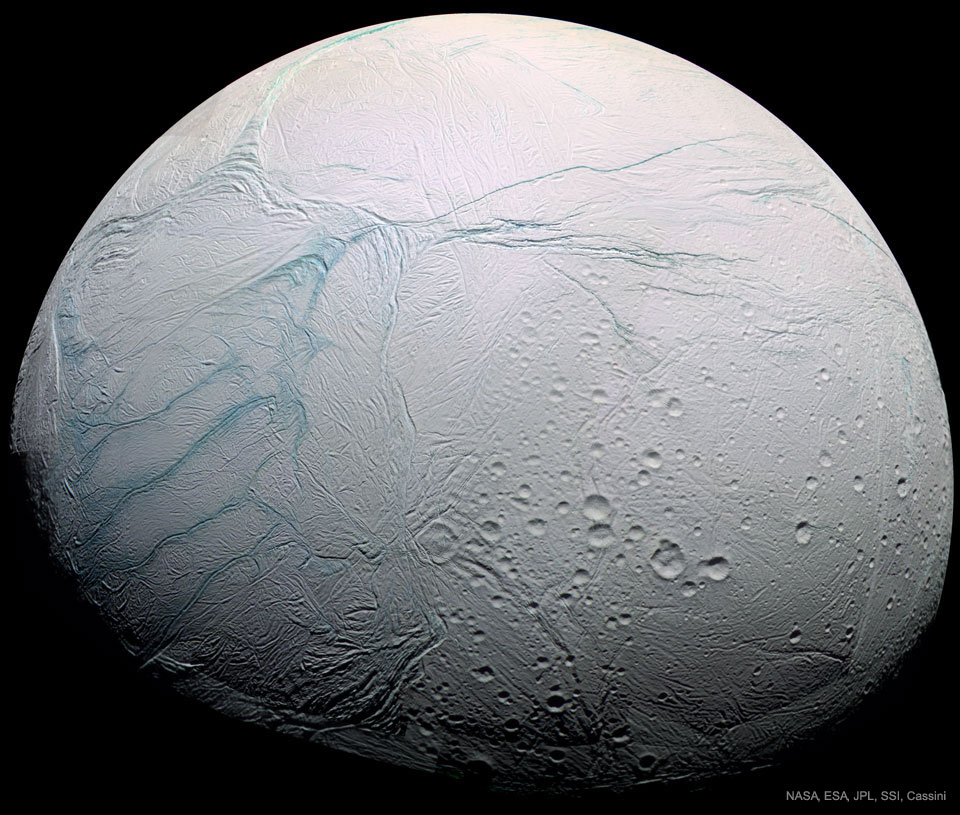2020 April 27
Fresh Tiger Stripes on Saturn’s Enceladus
Image Credit: NASA, ESA, JPL, SSI, Cassini Imaging Team
Explanation: How will humanity first learn of extraterrestrial life? One possibility is to find it under the icy surface of Saturn’s moon Enceladus. A reason to think that life may exist there are long features — dubbed tiger stripes — that are known to be spewing ice from the moon’s icy interior into space. These surface cracks create clouds of fine ice particles over the moon’s South Pole and create Saturn’s mysterious E-ring. Evidence for this has come from the robot Cassini spacecraft that orbited Saturn from 2004 to 2017. Pictured here, a high resolution image of Enceladus is shown from a close flyby. The unusual surface tiger stripes are shown in false-color blue. Why Enceladus is active remains a mystery, as the neighboring moon Mimas, approximately the same size, appears quite dead. A recent analysis of ejected ice grains has yielded evidence that complex organic molecules exist inside Enceladus. These large carbon-rich molecules bolster — but do not prove — that oceans under Enceladus’ surface could contain life. Another Solar System moon that might contain underground life is Europa.
Experts Debate: How will humanity first discover ET life?
Tomorrow’s picture: an almost solar system
土卫二上出现的新虎纹
影像提供:NASA,ESA,JPL,SSI,Cassini Imaging Team
说明:人类能在何处找到首例的外星生命?在诸多的候选里,土卫二(恩克拉多斯)的表面冰层下方是可能之地。生命可能存在于该处的理由之一,是这些昵称为虎纹、冰冻内层的冰证实可由此喷出的条状结构,从这些裂缝释出的微细冰粒子,笼罩在南极上空并造就了土星神秘的E环。支持的证据来自在2004年到2017年间,绕行探索土星系统的卡西尼号探测船。上面这幅高解析的土卫二影像,即是在一次近距离飞越时所拍摄,而其中的不寻虎纹特征,则以泛蓝的假色来呈现。不过,为何土卫二会如此活跃,则仍然是个谜团,因为附近和土卫二大小相近的土卫一(米玛斯),是个死寂的卫星。最近分析喷出的冰粒,找到了土卫二内部有复杂的含碳有机分子的证据。这些大型含碳分子,支持但无法证明土卫二地下海洋可能藏有生命。在太阳系里,另一个可能藏有次表面生命的天体是木卫二(欧罗巴)。
专家辩论:人类如何找到首例的外星生命?
明日的图片: a dangerous sunrise







